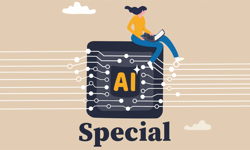
As we emerge from restrictions, I think print can look forward to a brief resurgence as public places and venues reopen fully and physical venue distribution becomes viable once again. There is a huge spectrum of response to the pandemic amidst apparently similar publisher profiles. Some have ditched their printed product for good and yet at the other extreme, some have expanded and grown their distribution. I see it as a classic ‘glass half full’ situation and, anecdotally, the latter seem to be faring better.
Beyond that honeymoon, lies the eternal debate as to the relevance and viability of print. There can be no denying that it is increasingly ‘expensive’ in terms of reach but at the same time, the enduring impact it has goes way beyond what other channels can achieve. There is a tremendous opportunity for brand owners who can effectively leverage rich data to cut through with their most valuable audience segments and turn ‘expensive’ into ‘premium value’.
Many voices are once again predicting the demise of print amidst the notion that Covid has accelerated structural change in the media. What is easy to forget is that post-Covid, consumers are generally fed up with looking at screens and know that screen time is not generally good for them. Print gives them a welcome break and an opportunity to enjoy reading again. There is a chance to deliver something tangible and exclusive via the printed page that other media simply cannot rival.
There is also growing awareness in our younger generations of the proliferation of fake news and misinformation. Print is a welcome antidote to intrusive screen noise and clickbait. As concern for wellbeing in relation to social media and screen time grows and regulatory frameworks are established with more onerous responsibilities for social networks and the costs implicit within those, I can see the balance tipping back towards ink on paper. People turn to print for high quality, trusted information and carefully considered opinion.
The pandemic has given many of our publishing clients the opportunity to re-evaluate the effectiveness of their product. Some are finding they can be more successful with fewer physical copies; ‘less is more’. For some, more product will equal bigger returns. There is no single formula but I would say that successful publishers have their ears to the ground in their communities and are investing in their products to grow that loyal audience.
As with many sectors, I believe those who are quick off the mark will be the winners in the post-Covid era – there is a huge opportunity for young, agile businesses to triumph using print as a central part of their media mix.
Print is a welcome antidote to intrusive screen noise and clickbait.
About The Manson Group
The Manson Group produces publications for some of the UK’s smallest, and largest publishers. Established by the current owners in 1969, the Hertfordshire-based printer says it is setting its sights on the future by investing in a number of green initiatives, placing sustainability at the heart of its future development.
Email: enquiries@mansongroup.co.uk
Twitter: @mansongroup
LinkedIn: linkedin.com/company/the-manson-group
This article is part of our ‘Print Post-Pandemic’ special feature, looking at the future of print as we emerge from lockdown. The feature includes the following articles by leading publishers and suppliers:
A major part of the mix, by Mark Allen
Rewards extended dwell time, by Sally Hampton
Shout it loud: print is safe!, by Chris Horn
Targeted distribution is key, by Stephanie Hyde
New metrics needed, by Keiron Jefferies
Sustainability: consumers demanding more, by Sarah Lesting
We need to change the way we operate, by Nicola Murphy
Reasons for (justifiable) optimism, by Tim Robinson
Luxury is physical, by Piers Russell-Cobb
Positive outlook, by Adam Sherman
Subtle changes bring cost savings, by Julian Townsend
Turning ‘expensive’ into ‘premium’, by Neil Wass
This article was first published in InPublishing magazine. If you would like to be added to the free mailing list, please register here.










